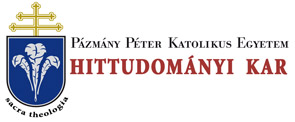Folia Theologica et Canonica, Supplementum (2016)
Szabolcs Anzelm Szijromi, O.Praem., Relationship among the Holy See, Czech-, Polish-and Hungarian Kingdoms in the 13"'-14" century
202 SZABOLCS ANZELM SZUROMI Christianity, which nation has already converted to the Christian faith in 966.17 The several religious and international political effects of baptism of the Czech rulers have been concluded in the year of 967 when Boleslaw II ascended to the throne (967-999), who after his Roman pilgrimage of 975, erected the diocese of Prague. The second diocesan bishop of this episcopal see was St. Adalbert, who had made spiritual influence not only in the territory of the Czech Kingdom, but in Poland and Hungary too. If we turn our attention to the 13*—14,h century religious, social and political circumstances of the afore-mentioned three countries, we can see that radical changes which had happened generally within these fields. This is the time when the development of cities had got fundamental impetus which had resulted in new institutions, for example establishment of hospices (e.g., Prague)18 and universities (Prague [1348], Krakow [1364], Pécs [1367], Old-Buda [ 1389])19. However, we cannot forget the establishment of the two major mendicant orders: the Dominicans (established by St. Dominic of Guzman [f 1221] in Toulouse [ 1214], confirmed by Pope Honorius III [1216—1227] in 1216)20 and the Franciscans (established by St. Francis of Assisi [t 1226]) in Assisi 1210, confirmed by Pope Honorius III in 1223)21. During this historical period new political systems had evolved in Europe, including the new functions of the royal counsel, the different hierarchical levels of political and legal responsibility, which had concluded into the parliamentary concept.22 Obviously, it caused also alteration in the relationship - its form and contents - with the Papacy.23 The 13'h and 14,h centuries are the age of the Papal universalism. The human society which had been divided for several political groups was recognized by the Roman Pontiff as a unity subordinated to the divine law. Based on 17 Makk F., Magyar külpolitika (896-1196) [Szegedi Középkortörténeti Könyvtár 2], Szeged 1993.25-35. ’ 18 Jedin, H. (a cura di), Storia della chiesa, V/1 : Civitas medievale. La scolastica - Gli ordini mendicanti (Xll-XIVsec.) [trad. Mion, G.], Milano 1993.2 196. 19 SZUROMI, Sz. A., La fondazione delle università nel medioevo e le particolarità dell’insegnamento universitario, in Folia Theologica et Canonica III (25/17) [2014] 123-134. 20 New Catholic Encyclopedia, New York 1967-1979. IV. 974-982 (Hinnebusch, W. A.), especially 974. Strayer, J. R. (ed.), Dictionary of the Middle Ages, New York 1982-1989. IV. 242-255 (Hinnebusch, W. A.), especially 243. Pelliccia, G. - Rocca, G. (a cura di). Dizionario degli Istituti di perfezione, Roma 1974—1997. III. 780-793 (Redigonda, L. A.), especially 780-781. Bibliotheca Sanctorum, Roma 1995.’ 692-734 (Celetti, M. Ch.), especially 697. Morris, C., The Papal Monarchy. The Western Church from 1050 to 1250 (Oxford History of Christian Church), Oxford 1991.446-447. 21 Pelliccia, G. - Rocca, G. (a cura di), Dizionario degli Istituti di perfezione, IV. 446-511. Krause, G. - Müller, G. (Hrsg.), Theologische Realenzyklopadie, I-XXXVI, Berlin-New York 1977-2004. XI. 389-397. Lexikon des Mittelalters, München-Zürich 1977-1999. IV. 800-820. Thompson, A., Francis of Assisi: A New Biography, New York 2012. 22 Engel, P., Beilleszkedés Európába a kezdetektől 1440-ig (Magyarok Európában), Budapest 1990. 193-197. Condorelli, O., Principio elettivo, consenso, rappresentanza (1 libri di Erice 32), Roma 2003.33-97. 23 Cf. Ullmann, W., A Short History of the papacy in the Middle Ages, 227-250.
